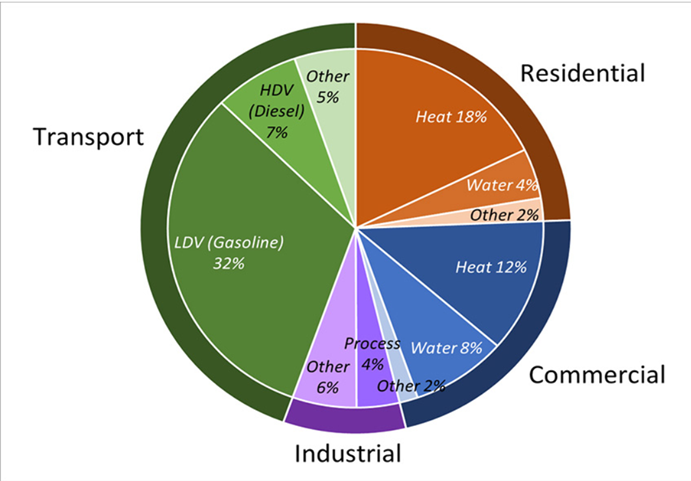Written by Daniel Pidgeon, ERS
Today’s ever-changing energy industry introduces new technologies, solutions, and policies each year attempting to modernize the grid away from fossil fuel dependence. In addition, new strategies continue to circulate the industry. Strategic electrification is a term that keeps popping up in the industry, but what is it and what does it mean for energy programs. We asked our experts: What is strategic electrification?
As defined by the Northeast Energy Efficiency Partnerships (NEEP), strategic electrification is the process of converting fossil-fuel-driven end uses to electricity, with the objective of reducing total carbon emissions. The long-term goal of strategic electrification is complete decarbonization using cleaner generating resources. Electrically driven end uses, a result of strategic electrification, can help end users become more energy efficient and reduce greenhouse gases (GHGs), while lowering customer and societal costs. In recent years, many states have adopted aggressive carbon reduction goals for the grid. In fact, as of this summer, 30 states and 3 territories have established Renewable Portfolio Standards (RPS) requiring utilities to increase their share of electricity coming from renewables. Regulators and utilities around the country are focused on modernizing the grid without dramatically increasing customers’ rates. The pathway to decarbonization through strategic electrification must meet a diverse array of customer needs and demands – and provide the necessary markets to support those needs and technologies. The first step in the two-pronged strategic electrification process is to target a small number of specific end uses that account for large segments of direct fossil fuel use. The chart below displays the fossil fuel emissions by sector and their causes.

From the chart above, the rationale for electric vehicles (EVs) is clear. Light duty vehicle (LDV) emissions account for a whopping 32% of fossil fuel use, as 90% of fuel used in transportation is petroleum-based. However, this number is beginning to decrease as EV infrastructure and use is on the rise. Meaningful electrification of the transportation sector will involve the widespread adoption of EVs. Massachusetts and New York are leading the charge for EV adoption by implementing statewide policies to spur EV growth.
In addition to electrifying the transportation sector, commercial and residential heating also provide major fossil fuel reduction opportunities. NEEP estimates that thermal energy and HVAC applications across the Northeast account for roughly one-third of all energy consumption and energy-related GHG emissions in the region. There are a wide variety of targeted methods for electrifying the commercial and residential heating sector, as described below.
- Minimize load (which will minimize electrification challenges) with the following:
- Air-source heat pumps (mini-split, centrally ducted)
- Ground-source systems
- Variable refrigerant flow
- Heat pump water heaters
- Deploy the following complementary strategies to electrification:
- Reduce space heating through efficiency
- Complete energy retrofits in existing buildings
- Construct zero energy homes
In addition to the technical potential for commercial and residential heating, economic potential through policies and markets must provide realistic, applicable solutions. Vermont and Massachusetts, for example, have offered financing strategies and incentives for commercial and residential customers to install air-source heat pumps and heat pump water heaters. Rhode Island has taken a different approach, trying to explore workforce engagement to drive heat pump uptake.
The second step of the strategic electrification process is to decarbonize the grid. After converting fossil-fuel-dependent sectors from fossil-fuel consumption to electrical consumption (i.e., transportation and commercial/residential heating), strategic electrification will diversify the electric grid with renewable generation to achieve more complete decarbonization. Using a variety of energy resources like solar, energy storage, microgrids, and other community generation resources will improve the grid’s reliance on renewable-based, relatively carbon-free electricity.
Strategic electrification’s two-pronged approach can be instrumental in modernizing the grid, with the possibility to reduce atmospheric GHG levels, pollution, and social and customer costs. A properly diversified electric grid, utilizing diverse generation sources, leads to a flexible grid in generation, interconnection, storage, and demand response.
As previously stated, once major fossil-fuel-based segments have been converted to be electrically fueled, diversifying the electric grid with renewable generation is the final step to decarbonization. In a future article, I will dig into more in-depth and state-specific information on EVs and the commercial and residential heating sector as they relate to the strategic electrification goal of decarbonization.
